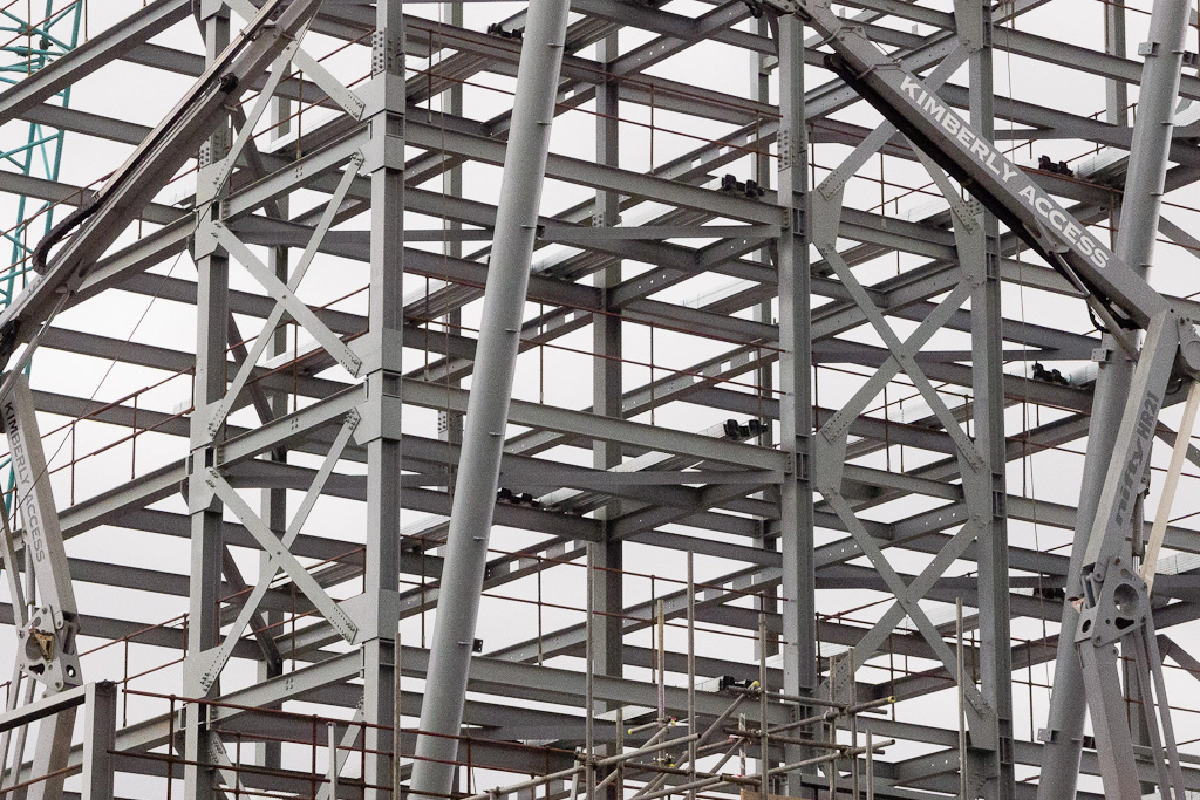Gateshead, Tesco

In Gateshead town centre, huge steel structures are being bolted together like giant Meccano. Their sterile frames loom over and encroach the streets below in a way that demonstrates their designer’s lack of regard for the people who will be using the spaces around them.
This is the new Trinity Square, built on the site of Trinity Shopping Centre and its infamous car park designed by the late Rodney Gordon of Owen Luder Partnership.
The purpose of these buildings is largely the same as the former occupants of the site; it’s a shopping centre, a hub for commercial activity based around the private car. This time however, people will park their cars in a subterranean pit rather than a conspicuous multi story car park. There will also be two large blocks of student accommodation to capitalise on Newcastle’s large student population.
It’s a continued mining of public urban space for commercial interest, and cheap construction methods as well as scant regard for the importance of good urban architecture are creating places that serve commercial interests and not the residents of Gateshead.
Rodney Gordon’s Trinity Centre and multi-story car park divided opinions; as a project to revive Gateshead town centre it was a failure, but as a piece of architecture, of art and design, it was unique. Much like the sculptures found in Gateshead’s public places - the Angel of the North being the most famous example - it was an audacious piece of public art, but with a function that, for a number of economic reasons, was never fully utilised. Whatever you thought of it, it was designed by someone who genuinely thought their work would improve people’s lives through modern design.
There is no such original thinking in this new development; its design is informed by cost and by market research. The associated public relations material is pure tokenism; yes, there will be what they call a public square, but I see it more as a kind of commercial clearing, or maybe a legally required fire assembly point. Try and exercise the rights you’d normally have in a public square, for example: to do street photography, campaign for a particular cause, protest, proselytise etc., and you’d no doubt be moved on by someone with a walkie-talkie line to the CCTV operator.

In thirty years time, will this development gain the notoriety that its predecessor enjoyed before it was demolished? I suspect not. The car park was a radical and brave building the like of which hadn’t been seen before. These buildings will be homogenous with most city-centre retail buildings constructed in the UK during the last twenty years, so their sheer banality will no doubt be met by indifference. With that in mind, maybe we get the buildings we deserve.